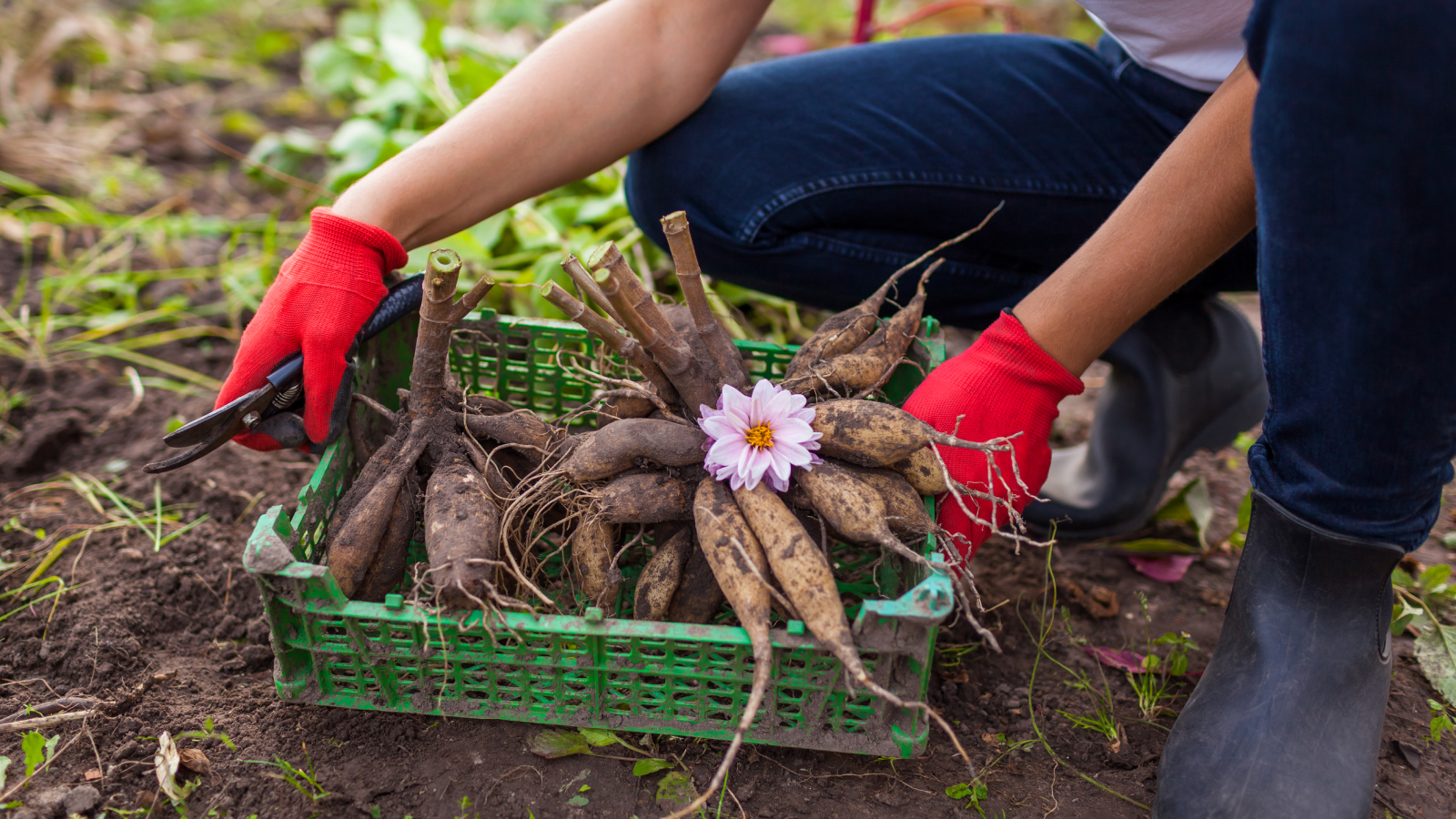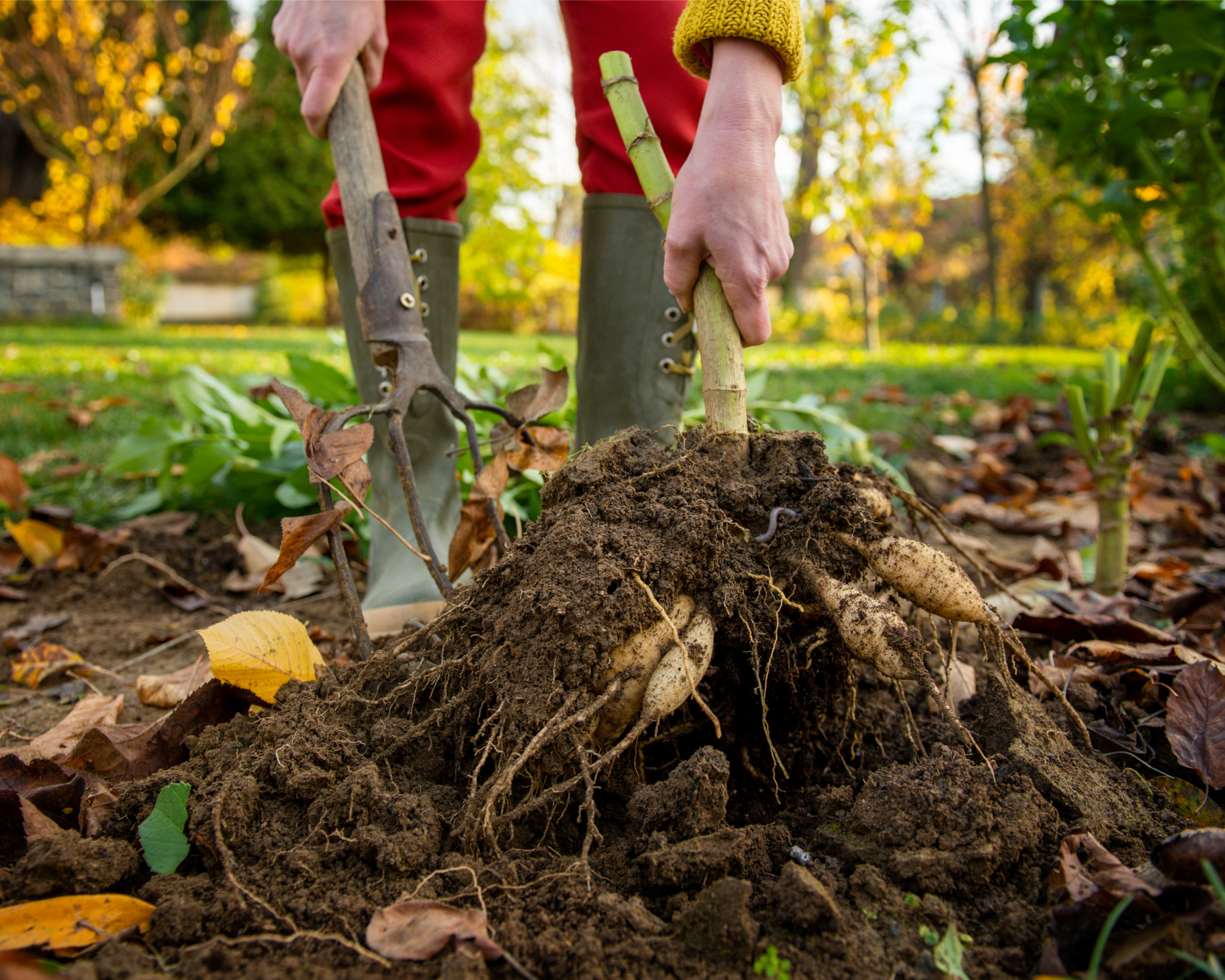Guide To Storing Dahlia Tubers For Next Year’s Garden: Step-By-Step Instructions
Beautiful dahlias are a favorite garden flower, and properly storing dahlia tubers in the winter will guarantee their brilliant summer blooms year after year.


It’s easy to understand how many of us become enamored with the beauty of dahlias, and storing dahlia tubers is an integral part of their care in winter. A striking addition to any home landscape or garden, avid flower growers frequently find themselves drawn to rare and highly sought-after dahlia varieties.
Most dahlia fans are eager to grow, multiply, and preserve their favorite types. Diligent overwintering of dahlias enables these cherished perennials to thrive for many seasons to come. In this article, we will explore the process of properly storing dahlia tubers in greater depth.
Can You Leave Dahlias in the Ground Over Winter?
While many dahlia growers prefer to dig and store their dahlia tubers each season, it is not always necessary. Most dahlias are considered hardy in USDA growing zones 8-10. In these regions we usually see consistent return of the plants from one season to the next without digging.
Several conditions can impact a tuber’s ability to survive the winter. Most notable among these is tolerance to cold and soil moisture. Rot, fungal disease, and other damage caused by poor drainage are among the most common causes of loss of tubers.
In frost-free climates there’s no need not worry about issues related to the cold, but the tubers may benefit from routine division and brief periods of rest between growing seasons.
How to Overwinter Dahlias
Digging and storing dahlias for winter is a simple process, once you know what to do. Here's how to take your tubers out of the garden and get them ready for storage:
1. Dig

The process of storing dahlias begins when the plant is ready to dig. Ideally, plants should be allowed to die back naturally, with the arrival of the first frost. At this time, the foliage will wilt and turn black. Each stem can then be cut back to the ground, leaving only a few inches to mark the plant’s location.
Sign up for the Gardening Know How newsletter today and receive a free copy of our e-book "How to Grow Delicious Tomatoes".
Tubers should be left in the garden, undisturbed, for approximately two weeks. This period of time will help to prepare the tubers for storage, and ultimately, reduce losses during winter.
When digging, experienced growers suggest working in a circular perimeter around the plant to avoid slicing through or damaging the underground tubers.
2. Wash

After each clump has been lifted from the soil, it need to be washed. This can be done using soak tubs, or a gentle blast from the garden hose. Removing excess dirt from the plant aids in the prevention of rot during storage, as well as in the division process.
3. Divide
Though tubers can be divided in the spring, many gardeners prefer to do this after the plants have been lifted in autumn. Each viable tuber will consist of three parts: the eye, the neck, and the body. Use a sharp horticultural knife to carefully cut away each of the tubers from the main clump, or simply divide the clump into smaller pieces.
4. Dry
After processing, dahlia tubers should be allowed to dry completely before storage. In most instances 1-2 days is more than sufficient. Though dahlias are susceptible to rot, excessively dry conditions may also cause problems in storage. Over-dried tubers generally have a wrinkled or shrunken appearance.
5. Add Fungicide (Optional)
When dahlia tubers are properly processed and prepared for storage, rotting is seldom an issue. Still, the loss of tubers can occur, seemingly without explanation.
To further safeguard against rot, some experts advocate using a fungicidal treatment before storage. When using a fungicide, make certain to read and follow each specific manufacturer's labeled instructions for safe use.
How to Store Dahlia Tubers
Proper storage can mean the difference between beautiful blooms and rotten tubers. Here's how to store dahlias so they provide a summer full of flowers again next year:
1. Wrap
Techniques for storing dahlia tubers vary. Commonly, gardeners choose paper or plastic bags to keep the tubers fresh. Individual tubers may also be stored in plastic wrap, which will help to preserve moisture throughout winter. Use caution when storing tubers in plastic, as it can impede airflow if it’s not properly ventilated.
2. Bury

Cardboard boxes and plastic containers to store dahlia tubers are another popular option. Large numbers of tubers can be arranged in layers and then buried beneath a medium. The best storage mediums include mixtures of peat moss, vermiculite, or even wood shavings.
Throughout the winter, the containers should be checked routinely. Those that have dried completely may require additional misting to prevent dehydration and ensure that tubers do not begin to shrivel.
3. Store Somewhere Cool
Place your dahlia tubers in a cool, dark location for the winter. Basements, unheated garages, and closets are ideal for dahlia storage provided that the space remains frost-free. Ideal storage temperatures should range between 40-50 F (4-10 C) with approximately 90% humidity. Tubers that show signs of rot are most often the result of conditions that are either too cold or dehydration from storage that is much too warm.
How to Revive Dahlia Tubers in Spring
Dahlia tubers that are overwintering can be difficult to wake. Most gardeners begin this process in late winter by bringing storage containers to room temperature. Exposure to light will also help to initiate tuber growth.
To get an early start on the growing season you can arrange them into trays or pots in preparation for spring transplant. If conditions are warm and without risk of frost, dahlia tubers can also be moved outdoors to stimulate new growth.
Dahlias are such a beautiful feature in the garden, eliciting excitement and pleasure with their varied colors, sizes, and characteristics, they are worth the little extra time it takes to nurture them through the cold months.

Bonnie Grant is a professional landscaper with a Certification in Urban Gardening. She has been gardening and writing for 15 years. A former professional chef, she has a passion for edible landscaping.